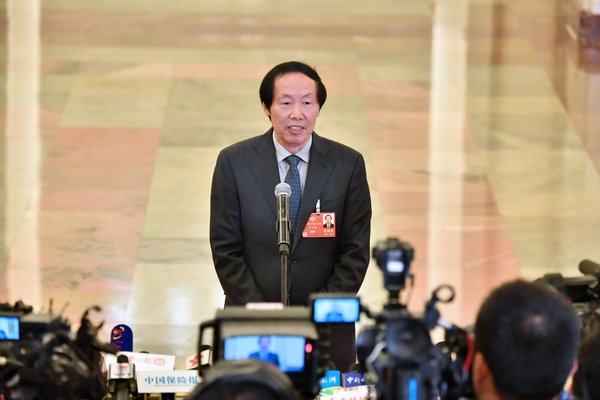Two sessions focus on cultural heritage protection


Liu Yuzhu, a CPPCC member and head of the State Administration of Cultural Heritage, March 3, 2018. [Photo/Xinhua]
Liu Yuzhu, a CPPCC member and head of the State Administration of Cultural Heritage, said cultural relics can play an important part in implementing the rural revitalization strategy and poverty elimination target. As many cultural relics are mainly distributed in poor areas, local governments can improve the local infrastructure to promote rural tourism and the cultural industry. By doing so, the potential of cultural relics can be gradually realized.
Yang Yunfei, a NPC deputy and dean of the Chinese Academy of Oil Painting at the National Academy of Arts, has been committed to the preservation of ancient village culture and intangible cultural heritage. "As a painter, I often travel to some remote villages to paint from nature where the traditional Chinese cultural genes are still well preserved. But it's harrowing to see that more and more such villages, especially their ancient buildings, are being deserted," Yang said.

Actor Duan Yihong delivers a monologue as the Spirit of the Sword of Goujian in the show National Treasure and Every Treasure Tells a Story. [Photo provided to China Daily]
As for how to effectively protect these cultural heritage sites amid rapid urbanization, Yang offered his suggestions. First, while protecting the appearance of ancient villages, create some relevant cultural tourism bases. Second, save endangered traditional crafts by opening traditional crafts training institutes and hiring local craftsmen to teach. Third, promote local traditional festivals and rituals to pass on the traditional cultural genes to future generations.
The past several years also are characterized by the increasing interdependence of intangible cultural heritage protection and poverty alleviation, thanks to the China Ministry of Culture's initiative to bring intangible cultural heritage back into people’s daily lives.
In 2015, the Ministries of Culture and Education launched a research and training program for inheritors of intangible cultural heritage. Up to now, nearly 48,000 inheritors have graduated from the program and increased their capabilities.
Since March 2016, supported by the Ministry of Culture, 10 traditional cultural and art work stations have been gradually set up across the country to promote traditional crafts. These include embroidery, wood sculpture and lacquer art. More than 1,000 kinds of products have so far been developed at these stations and put on the market, which has greatly promoted the innovative transformation of traditional crafts.
Due to all these effective measures taken in recent years, culture has become an integral part of targeted poverty alleviation. During this year's two sessions, Yang Changqin, a NPC deputy from Southwest China's Guizhou province, told the story of how protecting intangible culture heritage has helped lift local people out of poverty.
The 27-year-old is a provincial-level inheritor of bamboo weaving, and has practiced the art for 10 years. To help local bamboo farmers, in 2014 she began to offer bamboo weaving training courses in her hometown and since then nearly 1,000 poor locals have signed up for the courses. Now, Yang's bamboo weaving company has created job opportunities for over 20 local women and its annual sales have exceeded 3 million yuan ($473,000).




